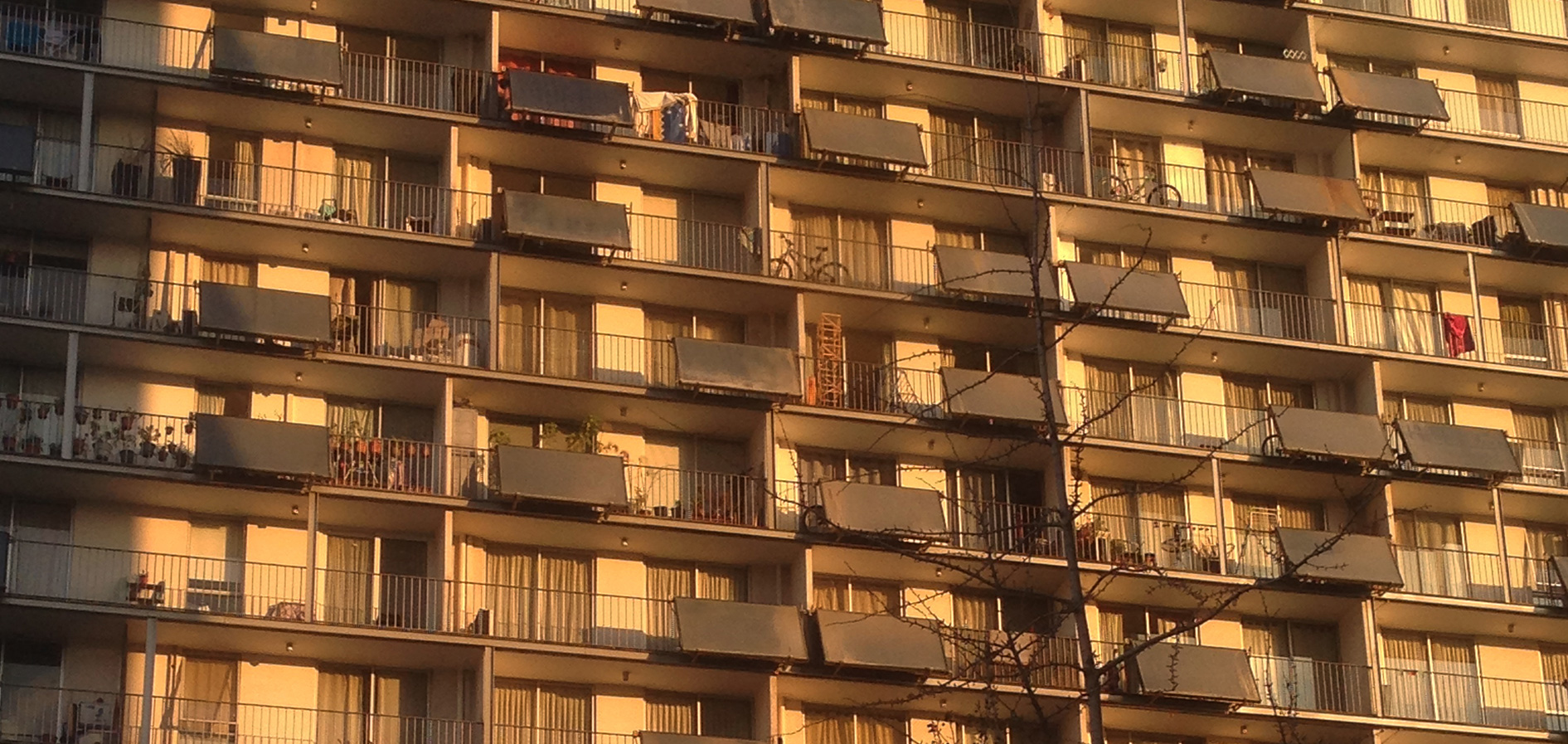
En “Nostalgia de Santo Domingo”, exploramos la ciudad que habitamos desde distintas perspectivas: la del dominicano que ya no vive en Santo Domingo, la del que habita ahora, pero tiene curiosidad por el Santo Domingo del pasado, y la del que ha vivido varias transformaciones de la ciudad a lo largo de su vida.
In “Nostalgia de Santo Domingo”, we explore the city we inhabit from different perspectives: The one of the Dominican who no longer lives in Santo Domingo, the one who lives now, but who is curious about the Santo Domingo of the past, and the one who has lived several transformations of the city throughout its life.
Máximo del Castillo se describe como alguien a quien le gusta atesorar momentos para luego recordarlos, y su instrumento para hacerlo es su cámara fotográfica. En República Dominicana, lo veíamos documentar desde manifestaciones LGTB, hasta tradiciones sincréticas como el Gagá y la fiesta a San Miguel. Su mirada contemplativa y aguda siempre nos revelaba lo oculto de una manera preciosa, esos temas “Tabúes” inherentes a nuestra sociedad, ya sea en el Desfile Militar Nacional, en una fiesta de Drags o en una tarde de playa en Boca Chica. Con Máximo, descubríamos nuestra identidad desde lo prohibido.
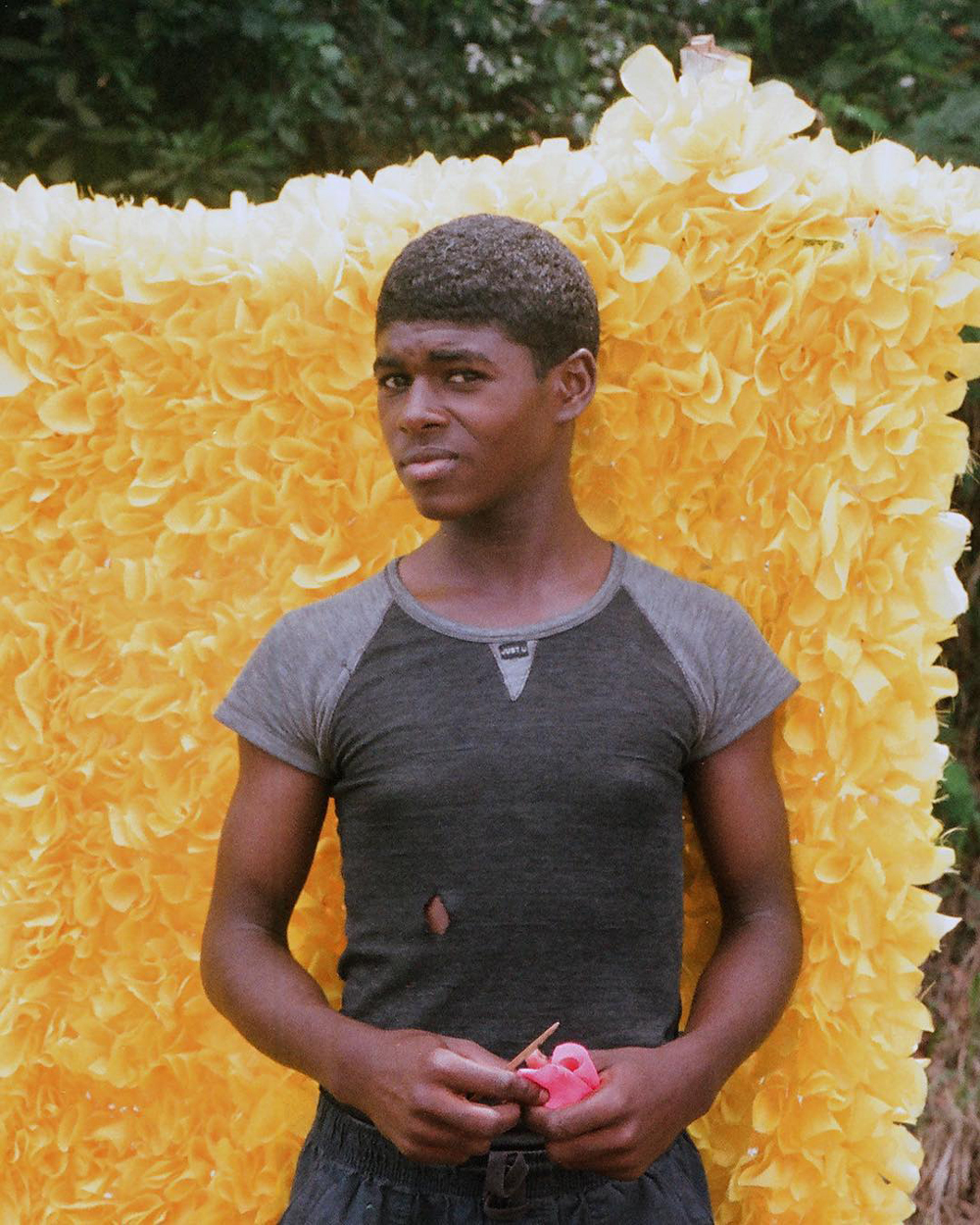
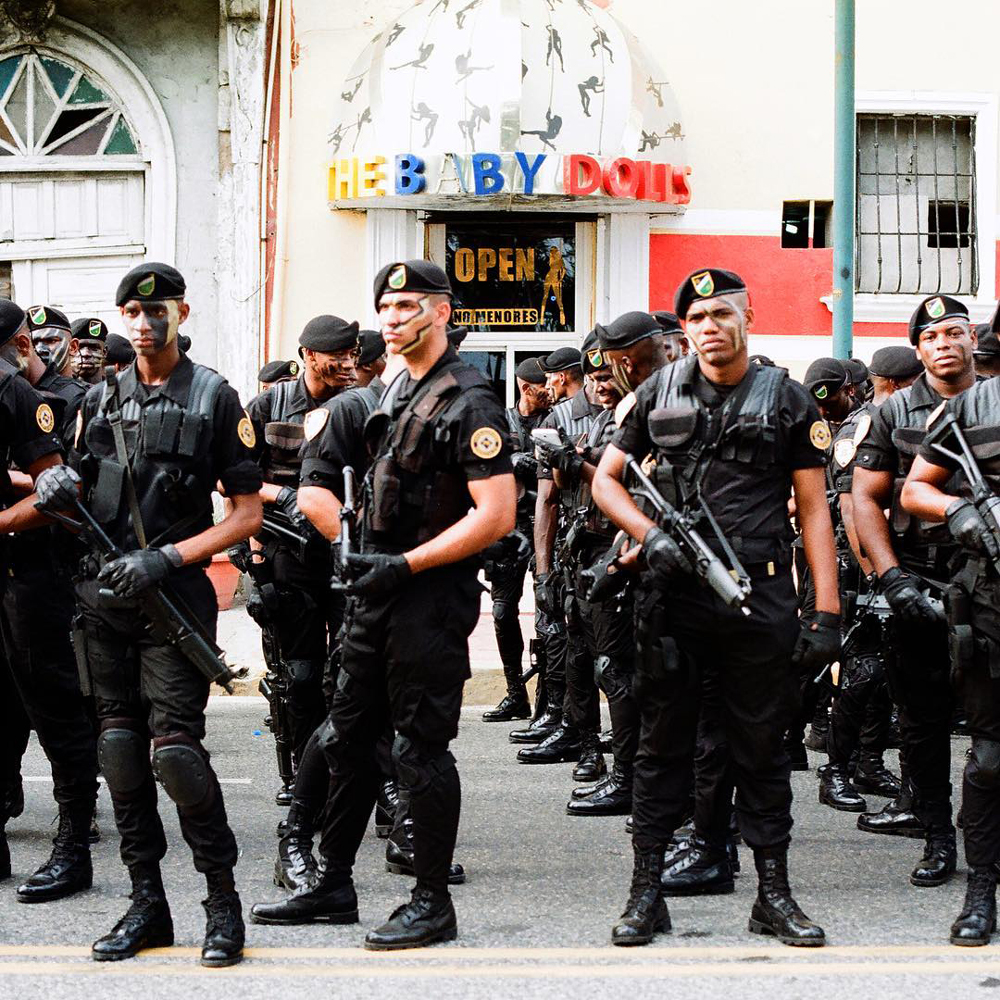
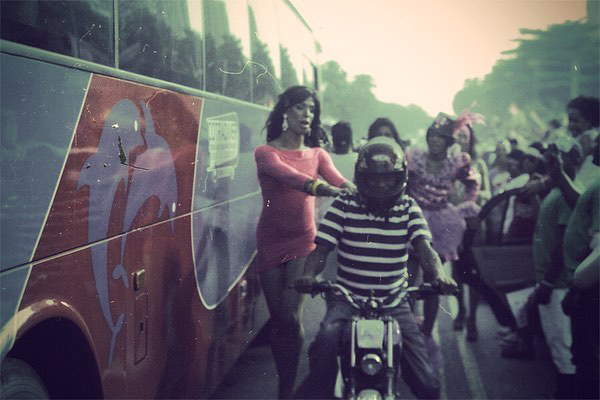
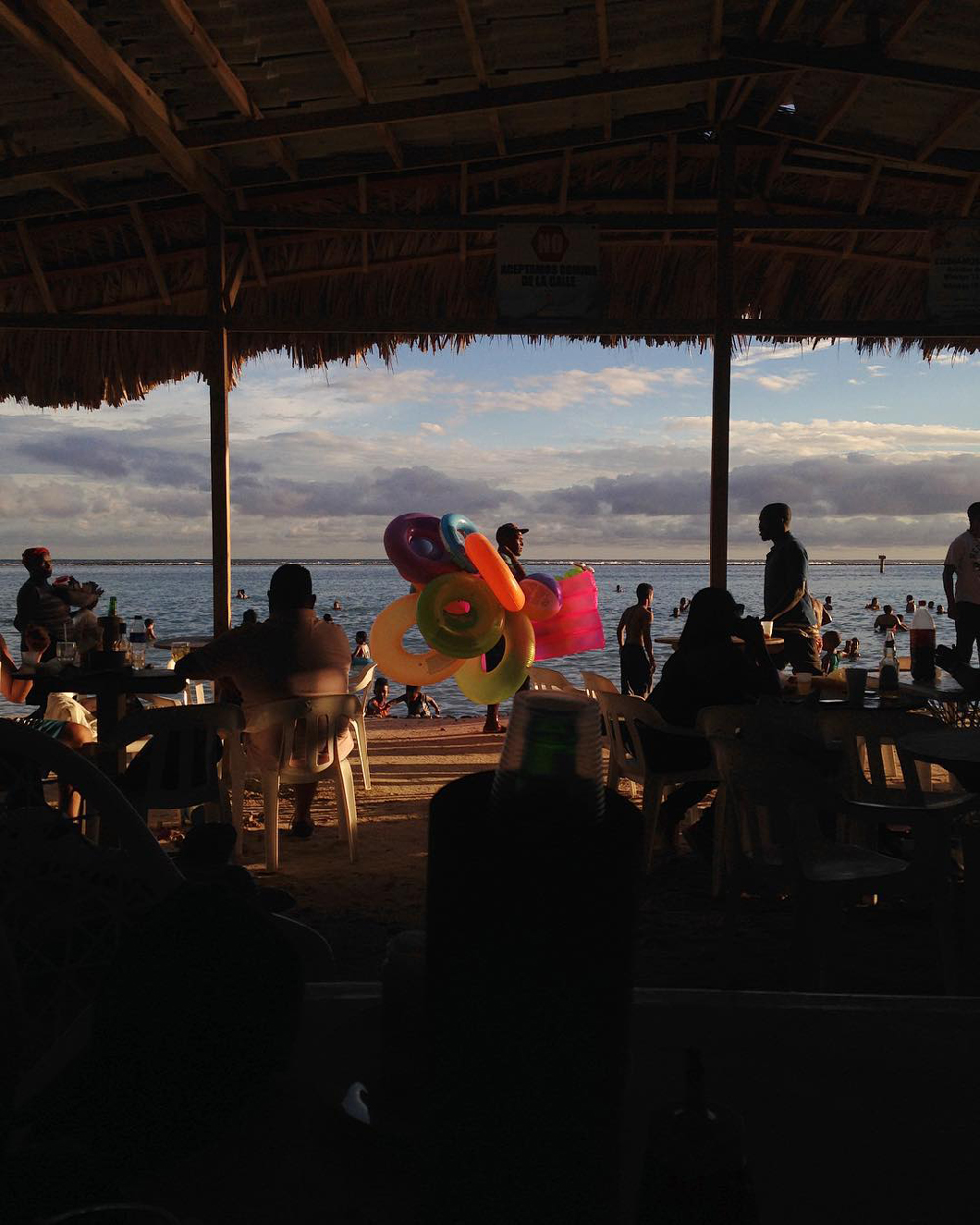
Máximo del Castillo describes himself like someone who likes to treasure moments to then remember them and his instrument is his camera. In Dominican Republic we saw him document LGBT demonstrations, to syncretic traditions such as the Gagá and the fiesta to San Miguel. His contemplative and sharp gaze always revealed us the hidden in a precious way, those "taboo" themes inherent to our society, whether in the National Military Parade, in a Drags party or in a beach afternoon in Boca Chica. With Máximo, we discovered our identity from the forbidden.




Máximo ahora vive en Santiago de Chile, como miles de dominicanos, y va descubriendo no solo la identidad chilena, sino la de un nuevo Chile, conformado por miles de inmigrantes que se integran llevando un poquito de su país al país austral. Aunque él prefiere integrarse a través de la fotografía documental.
Máximo now lives in Santiago de Chile, like thousands of Dominicans, and he’s discovering not only the Chilean identity, but a new Chile, made up of thousands of immigrants who integrate bringing a bit of their country with them. Although he prefers to make it through documentary photography.
Capital: ¿Hace cuánto vives en Santiago de Chile? Maximo: 1 año.
Capital: For how long have you been living in Santiago de Chile? Maximo: 1 year.
C¿Y en qué parte de Santiago vives? MEn Santiago Centro.
CAnd where in Santiago do you live? MIn Santiago Centro.
C¿Cómo es un día en la vida de Máximo en Santiago? MMe levanto, preparo desayuno... Depende de mis tareas en el día y de si tengo que trabajar en la casa, porque a veces trabajo fuera ya sea asistiendo a Alex Otero, o trabajos que aparecen. Actualmente estoy trabajando en la embajada dominicana aquí en chile en el departamento de cedulación, y luego en la tarde sigo trabajando más en casa, como hasta las 7 y pico me pongo a ver los programas chilenos en la televisión.
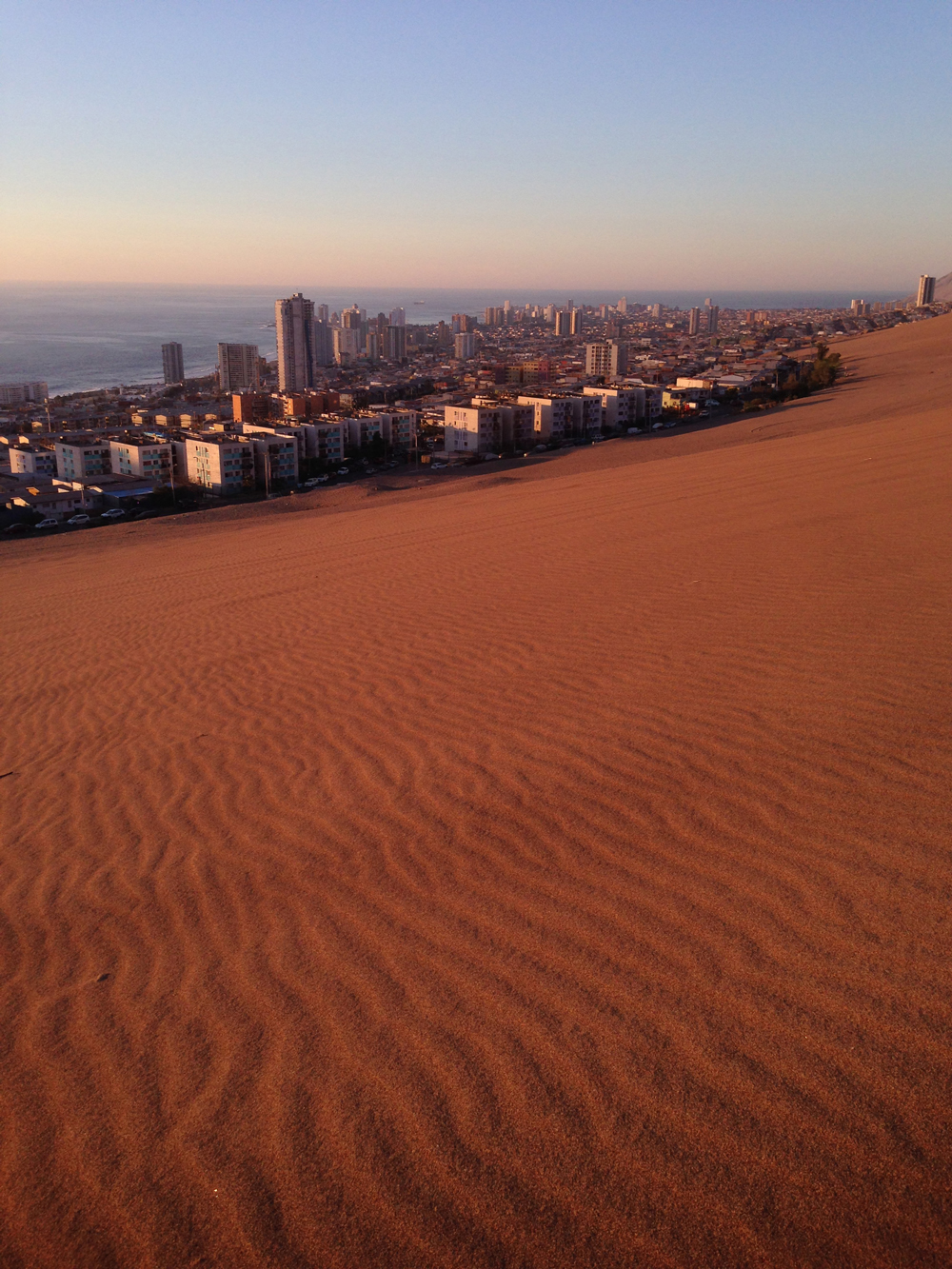
CHow’s one day in Máximo’s live in Santiago? MYI wake up, make breakfast… Depending on my day chores and of if I have to work from home, because sometimes I have to go place with Alex Otero, with whom I do productions. I’m currently working on the dominican embassy here, in the afternoon, I keep working at home. At night, I start watching Chilean programs on television.

C¿Y las salidas a tomar fotos? MUsualmente son los fines de semana, que visitamos distintos lugares, nos juntamos con Carmen y eso.
He tomado fotos de la ciudad, pero no las he publicado porque quiero hacer un recopilatorio de todas las fotos que he hecho desde que llegué. Duré una temporada viviendo en Iquique, que es al norte, y es más parecido a la isla porque tiene mar. En Santiago no hay mar y a veces se me complica ubicarme, como uno viene de una isla y tiene la referencia de que el mar está a un lado. En Santiago yo lo que tengo es la cordillera, a veces me ubico pero a veces no lo tengo muy claro. Aunque ya estoy más ubicado, ya sé cuál es el norte.
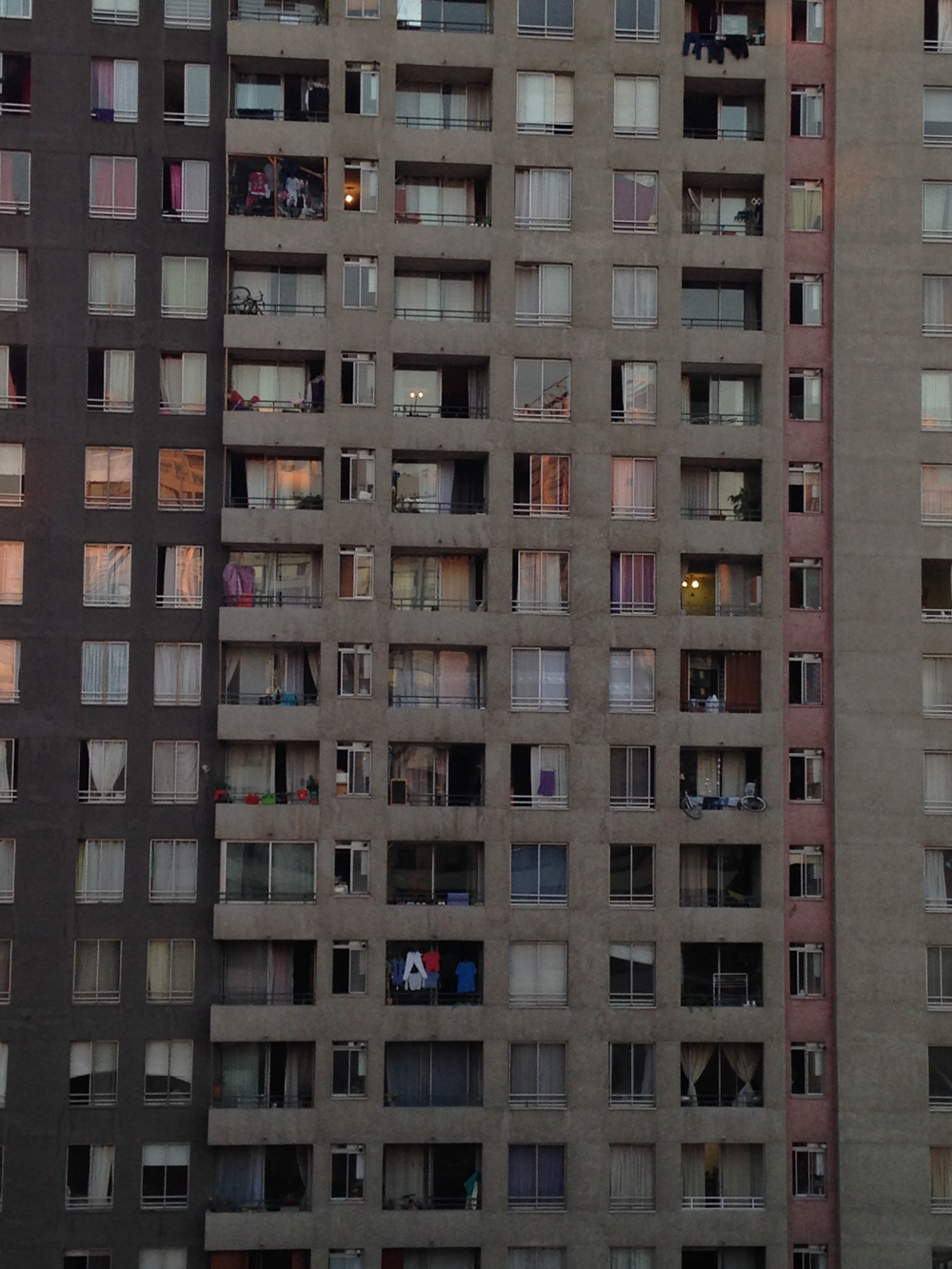
CAnd the rounds to take pictures? MUsually it's the weekends, we visit different placen we get together with Carmen and so on.
I have taken pictures of the city, but I haven’t published them because I want to make a compilation of all the photos I have taken since I arrived. I spent a season living in Iquique, in the north, and is more like the island because it has sea. There’s no sea in Santiago and sometimes it is difficult for me be oriented, because one comes from an island and has the reference that the sea is on one side. In Santiago what I have is the mountain range, sometimes I locate myself but sometimes I do not have it very clear. Although I'm more located, I know what the north is.

C¿Cuáles son las cosas que más te han cautivado de Santiago? MLa arquitectura, los reflejos... Aquí hay muchos edificios que tienen muchas ventanas y ventanales enteros que se reflejan en otros edificios y ese efecto me gusta mucho. Cuando hay sol es muy bonito, pero el sol es bien fuerte hay que siempre usar bloqueador, cuando no hay sol, es un poco gris todo el día, igual tiene su magia. Ahora ya va a empezar el verano, estamos en primavera pero igual hace un poco de fresco en las tardes desde que baja el sol.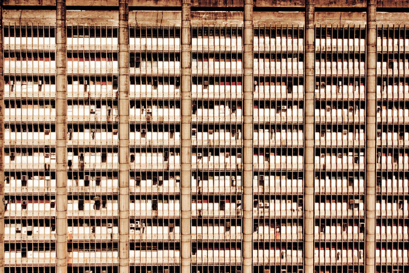
CWhat are the things that have captivated you most about Santiago? MThe architecture, the reflections... Here there are many buildings with many windows and entire windows that are reflected. I really like that effect. When the sun is out it’s very pretty, and strong, you always have to use sunscreen. When there is no sun, it is a little gray, but still has its magic. Now the summer is about to begin, we are in the spring but it is still cold in the afternoons since the sun goes down.
CLas fotos de las edificaciones con muchas ventanas, nos acuerdan a tu foto del Huacalito de Santo Domingo, ¿Por qué te gusta retratar este tipo de estructuras? MSiempre he sentido un poco de fascinación por la arquitectura Brutalista y el Huacalito podría decir es el edificio más Brutalista de Santo Domingo, con todo lo que eso implica. Donde vivo estoy rodeado de edificios en ese estilo, bien altos, hasta de 30 o 40 pisos y de alguna forma me gusta cómo las cosas cambian de balcón a balcón y esa sensación de identidad que cada balcón tiene.
CThe photos of the buildings with many windows, remember us your photo of the Huacalito in Santo Domingo, why do you like to portray this type of structures? MI've always felt a bit of fascination with Brutalist architecture and the Huacalito might say it's the most Brutalist building in Santo Domingo, with all that it implies. Where I live I'm surrounded by buildings in that style, very tall, up to 30 or 40 floors and somehow I like how things change from balcony to balcony and that sense of identity that every balcony has.
C¿Has encontrado alguna similitud entre Santiago de Chile y Santo Domingo? MExiste un poco. No tanto en la arquitectura, que es muy diferente, pero algunos lugares tienen algo de parecido, más con Gazcue y sus casas post modernistas, pero la gente es muy diferente. Las similitudes dependen de dónde estés. Si tú vas a los sitios donde hay dominicanos, como La Vega...Yo trato de ir un día a la semana a La Vega, que es un mercado, y ahí ya me reconocen porque a veces pido una “funda” y aquí dicen “bolsa”. Entonces cuando pido una funda me dicen “¡Ey!, ¡dominicano!”.
CHave you found any similarity between Santiago de Chile and Santo Domingo? MA little. Architecture is very different, but some places has some things in common, like in Gazcue, where there are post modernist houses. People is very different. Similarities depend on where you are. I you go to places where there are Dominican, like La Vega… I go a day a week to La Vega, a market and there they recognize me because sometimes I sat “funda” [bag] and here they say “bolsa”. So when I ask for a funda they say “Hey!, Dominican!”
CHay algunas fotos, como las del arreglo de globos, en las que hay que ver dos veces para darse cuenta de que no es en Santo Domingo MSi yo creo qué hay similitudes en ser latinos y como latinos tenemos esa necesidad de "sobre decoración" medio "tacky" por no decir "chopo" jeje. Igual el momento en el que llego a Chile es un momento de cambio con mucha inmigración y de alguna forma una nueva etapa en este país, se nota en la gente y en el comercio, por ese lado me encuentro con suerte de no ser el único.
CThere are some pictures, like then with the balloons, in which you have to see twice to realize that it’s not in Santo Domingo MYes, I think that there are similarities in being Latino and as Latinos we have that need for "over decoration" a bit "tacky" hehe. This moment of me arriving to Chile is a moment of change with a lot of immigration and in some way a new stage in this country, it shows in the people and in the commerce, for that side I am lucky not to be the only one.
C¿Has conocido más dominicanos en Santiago de Chile? M¡Sí! Alex Fox, que es un chico que hace documentales y videos, hemos trabajado juntos con Alex Otero, Paloma, quien recientemente compró una casa y la está “tropicalizando” con los colores que usamos en Santo Domingo, más que los colores de aquí que son todos muy grises.
CHave you met more Dominicans in Santiago de Chile? MYes! Alex Fox, a guy that makes documentaries and videos, we’ve worked together with Alex Otero, Paloma whom recently bought a house and is “tropicalizing” it with colors we use in Santo Domingo, more than colors here that are all very gray.
CEstuve viendo en tu perfil que has encontrado par de banderitas dominicanas en Santiago MSí, hay lugares donde hay peluquerías dominicanas, y las veces que me he juntado con Johan Mijaíl, él siempre me lleva a lugares de dominicanos. Johan Mijaíl es un performance artist dominicano que vive aquí.
CI’ve seen in your profile that you’ve found a couple of Dominican flags in Santiago. MYes, there’s places here with Dominican barber shops, and the time I’ve met Johan Mijaíl, he always takes me to Dominican places. Johan Mijalí is a Dominican performer that ives here.
CSobre las peluquerías, casualmente estuve viendo un microdocumental de una peluquería dominicana allá en Chile MYo me pelo con un dominicano aquí
CAbout barbershops, I happened to watch micro-documentary a about one there in Chile. MI cut my hair with one here.
C¿Y cómo lo conociste? MEstá a dos esquinas de aquí. Casi en todas las barberías trabajan dominicanos, haitianos o venezolanos.
Ellos (los dominicanos) entran por el norte, por Perú. Cuando estaba haciendo la regularización, me dijeron “Eres dominicano? y yo dique “Sí” “pero tú eres el único que has entrado legal” (Risas) y hasta café me brindaron.
CAnd how did you meet him? MIt’s two blocks from here. Almost in every barbershop work Dominican, Haitians or Venezuelan.
Dominicans come through Peru. When I was getting visa the asked me “Are you dominican”, I said “Yes”, “But you’re the only one that has come legally (laughs), they even gave me coffee.
C¿Y cómo se regularizan después de que entran? MHicieron un programa de regularización. Yo aproveché y me inscribí. Te dan una identificación por un año para que te organices para después legalizarte. En eso estoy. Me inscribí en marzo y me dieron los papeles en agosto, por eso fue que pude volver a Santo Domingo.
Aquí hay lugares donde te transportas. Los lugares de dominicanos aquí, entras y es tu atmósfera, sientes que estás en Santo Domingo.
CAnd how do they fix their status after they get in? MThey make a regularization program. I took advantage of it and I signed up. They give you an ID for a year so you can organize and then legalize yourself. In that I am. I signed up in March and they gave me the papers in August, that's why I was able to return to Santo Domingo.
There are places here where you transport yourself. The places of Dominicans here, you get in and it is your atmosphere, you feel that you are in Santo Domingo.
C¿Y la comida dominicana allá? ¿Has ido a restaurantes dominicanos? MSí, cuando me junto con Johan Mijaíl, siempre me lleva. De vez en cuando uno se antoja de unos plátanos. Y ya conseguí un sitio donde venden queso frito (Risas), hay que dar un viajecito pero tenía un antojo el otro día. Aquí venden plátano y yuca, también batata, con otro nombre.
CAnd Dominican food there? Have you been to Dominican restaurants? MYes, when I meet Johan Majalí he always takes me to one. Once in a while you want plantains. And I already found a place that sells fried cheese (laughs), it a bit far but I had a craving the other day. They sell platains, mandioc, sweet potatoes also, with other name.
CAl menos tú has hecho tu pequeño Santo Domingo allá MSí, y por ejemplo cuando nos juntamos con Paloma, que lleva más tiempo aquí, hemos hecho noches dominicanas, hacemos tostones, ponemos música. El merengue aquí lo bailan siempre, aquí oyen merengue, Juan Luis Guerra ta’ súper para’o y también oyen Romeo Santos. Incluso hay un imitador chileno de Romeo Santos, “El Kramer”, que hace su misma voz.
CAt least you’ve made your small Santo Domingo there. MYes, and for example when went together with Paloma, who has been here longer, we have made Dominican nights, we make tostones, we play music. They always dance merengue here, they always dance, Juan Luis Guerra is super known, they also listen to Romeo Santos. There's even a Chilean imitator of Romeo Santos, "El Kramer", who makes his voice.
CEs súper curioso que fuera te conectes más con tus raíces MSí, igual me pasó en New York, nunca había ido a NY ni a Washington Heights, y allá te sientes que estás en Santo Domingo. No tienes ni que hablar inglés, todos hablan español. Incluso los letreros de “No loitering”, en Washington Heights dicen “No coro aquí” (Risas).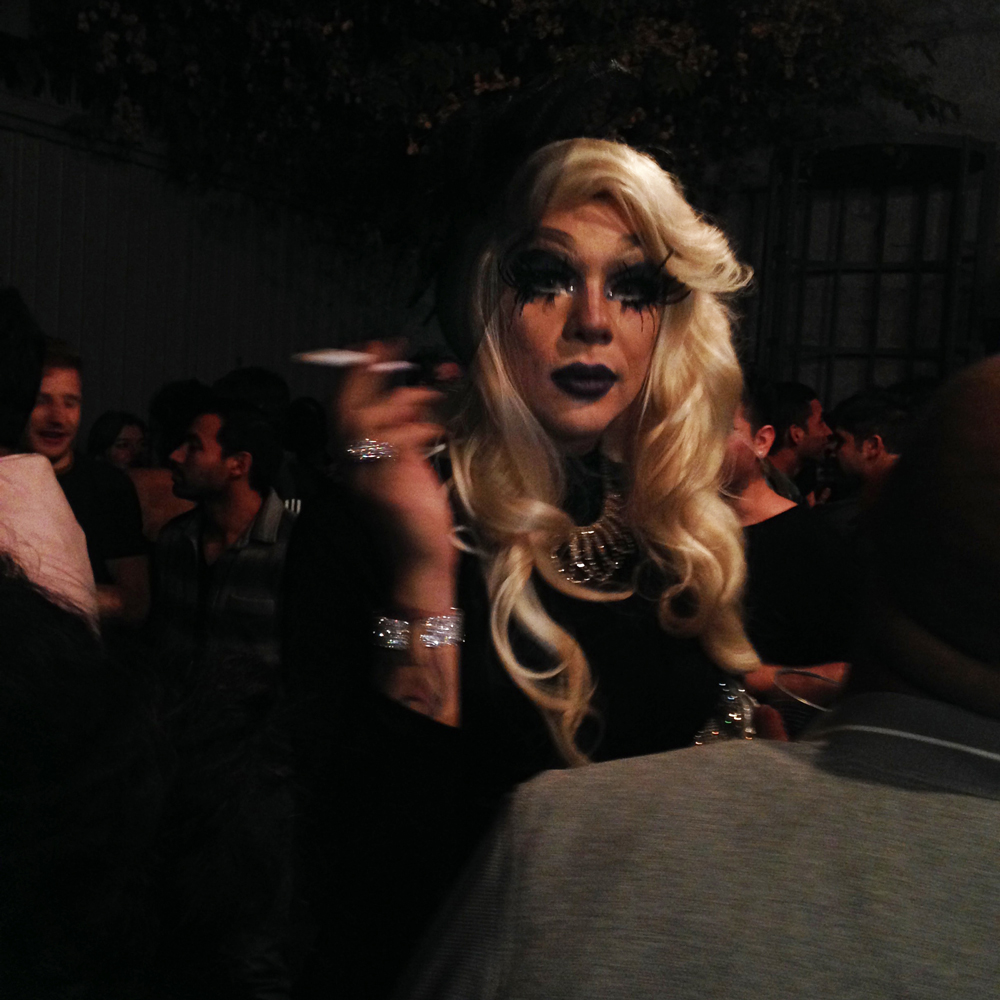
CIt's super curious that outside you connect more with your roots M Yes, it happened the same in New York, I had never been to NY or Washington Heights, and there you feel you are in Santo Domingo. You don’t even have to speak English, they all speak Spanish. Even the signs of "No loitering" in Washington Heights say “No coro aquí” [no partying here] (laughs). 
CAquí recuerdo que solías documentar la vida nocturna de una forma muy particular que ya era muy reconocida, ¿Qué tal la vida nocturna allá? MYo había dejado de hacerlo en Santo Domingo, y aquí he ido a un par de fiestas y cuando salgo no ando con la cámara, pero con el celular he documentado un poquito del nightlife. Hemos ido más a show drags.
Aquí es chévere porque llegan todas las Drags de RuPaul que allá no llegaban. Hemos ido a ver un par. 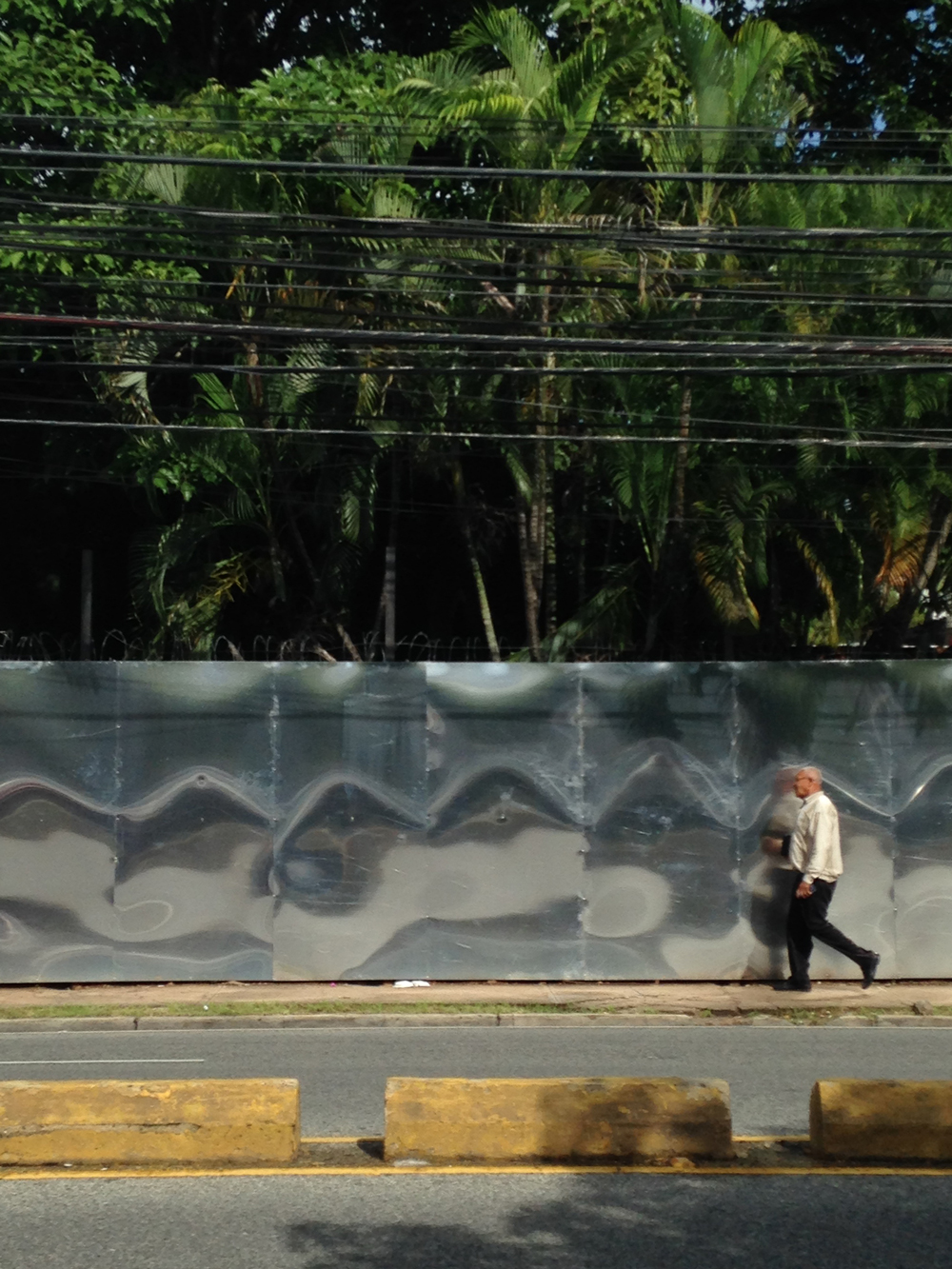
CI remember here you used to document nightlife in a very particular way that was very know, how’s the nightlife there? M I had stopped doing it in Santo Domingo, and here I’ve been to a couple of parties and when I go out I do not go with the camera, but with the cell phone I have documented a bit of the nightlife. We’ve been to more to show drags.
Here is cool because all the RuPaul Drags arrive that did not arrive there. We have gone to see a couple.
CCuando volviste después de un año en Santiago, ¿Cómo sentiste Santo Domingo? MHabían más tapones no sé…También, como yo cuando estaba allá no manejaba tanto porque andaba en bici, y ahora tuve que andar en carros, me encontré la ciudad más entaponada.
CWhen you came back after a year in Santiago, how did you feel Santo Domingo? M There were more traffic jams, I do not know ... Also, because when I was there I did not drive because I used a bike, and now I had to ride in cars, I found the city more jammed.
CYo creo que sí. La ciudad está colapsada de carros MPero por lo menos no se siente el smog que se siente aquí.
CI think so. The city is collaped by cars. M At least you don’t feel the smog you feel here.
CComo fotógrafo, ¿Cuáles son tus próximos proyectos? MQuiero hacer una publicación de dejar Santo Domingo, como duré una temporada en EEUU, después llegué aquí, después fuimos al norte de Chile, quiero hacer una publicación de todo ese tiempo que no he estado en Santo Domingo. Quiero que sea de todo lo que he vivido fuera, de la travesía de EEUU a Chile. El norte es totalmente diferente a Santiago.
CAs a photographer, what are your next projects? M I want to make a publication about leaving Santo Domingo, as I spent a season in the US, then I arrived here, then we went to the north of Chile, I want to make a publication of all that time that I have not been to Santo Domingo. I want it to be about everything that I've lived abroad, the journey from the US to Chile. The north is totally different from Santiago.
C¿Te gustaba más? MMe gustaba más porque tenía mar, y como chico de isla, podía caminar y verlo. Aquí a veces salgo pero no es lo mismo, no tengo esa referencia geográfica.
CDid you like it better? M I liked it better because there was sea, and like an island boy, I could walk and see it. Here in Santiago I go out sometimes, but it’s not the same, I don’t have that geographic reference.
CYo estuve viendo un artículo en un periódico “¿Cómo viven los dominicanos en Chile? Caribe de la Colina” MEs increíble cómo ellos consiguen el mobiliario de dominicana, no sé dónde lo consiguen aquí porque aquí es muy diferente. Hay muchas similitudes con Santo Domingo en Colina.
CI was watching an article in a newspaper "How do Dominicans live in Chile? Caribbean of the Hill" M It's amazing how they get the Dominican furniture, I do not know where they get it from here because it's very different here. There are many similarities with Santo Domingo in Colina.
CTienen una pequeña República Dominicana allá M¡Exacto! Yo quiero ir conociendo gente para documentar Colina, aquí es un poco más “brígido” como dicen aquí. La delincuencia es un poco “heavy”.
CThey have a small Dominican Republic there. M Exactly! I want to meet people to document Colina, here is a little more "brigid" as they say here. Crime is a bit heavy.
CO sea que aquí en Santo Domingo es más relajado MEs más relajado sí…
CSo here in Santo Domingo is more relaxed. M It's more relaxed yes ...
C¿Qué es lo que más extrañas de Santo Domingo estando en Chile? MEl calor, el sol, y también la amabilidad de la gente. Sentirme conocido por las demás personas, aquí soy un extranjero. Ya yo entiendo a la gente pero al principio me costó, porque aunque hablamos el mismo idioma, no usamos las mismas frases y la gente aquí usa muchos modismo. Para mí era más complicado porque tienes que saber de dónde vienen y qué quieren decir, pero ya estoy más ubicado.
CWhat do you miss the most about Santo Domingo being in Chile? M The weather, the sun, and also the kindness of the people. Meeting people, here I am a foreigner. I already understand people but it was hard at first, because although we speak the same language, we do not use the same phrases and people here use many idioms. For me it was more complicated because you have to know where they come from and what they want to say, but I'm more placed.
CSiento que incluso con EEUU estamos más familiarizados, a pesar del idioma MSí. Chile es un país donde casi no habían extranjeros, no estaban tan acostumbrado a los inmigrantes. En los últimos años ha habido mucha inmigración haitiana, venezolana, colombiana...Ultimamente se siente que hay más personas de otros países. Por un lado me gusta porque soy parte de un nuevo Chile, pero al mismo tiempo ellos todavía no están listos, están un poco huraños, les ha costado. El dominicano está más acostumbrado a recibir al extranjero
CI feel that even with the US we are more familiar, despite the language MYes. Chile is a country where there were almost no foreigners, they were not so used to immigrants. In recent years there has been a lot of Haitian, Venezuelan, Colombian immigration ... Lately it feels that there are more people from other countries. On one hand, I like it because I am part of a new Chile, but at the same time they’re not ready yet, they are a little shy, it has cost them. Dominicans are more used to receiving foreigner.
C¿Y te ves mucho tiempo allá? MCreo que sí, las cosas están marchando bien. Estoy haciendo cosas desde aquí, lo que me gusta porque no estoy en un solo sitio ni trabajando solo proyectos de una sola persona, sino que aquí he hecho cosas distintas. Cada mes es un nuevo reto, porque aparecen cosas diferentes a todo lo que había trabajado anteriormente.
CAnd do you see yourself a long time there? MI think so, things are going well. I am doing things from here, I like that because I am not in a single place nor working only projects of one person. Here I’ve done different things. Each month is a new challenge, because different things from what I’ve worked before come up.
C¿Y tú crees que ser extranjero y tener una visión distinta, te ha dado cierta ventaja como diseñador y fotógrafo allá? MAún no sé, pero sí, creo que de alguna forma nosotros somos más cercanos. Yo hago mucha fotografía documental, documento cosas aquí en universidades y colegios. Hacer fotos documentales me ha permitido conocerlos más a fondo, cómo se desenvuelve. Ha sido interesante poder documentar cómo es el día a día del chileno, eso me ha permitido integrarme más.
CAnd do you think that being a foreigner and having a different vision has given you an advantage as a designer and photographer there? MI still do not know, but yes, I think that somehow we are closer. I do a lot of documentary photography, I document things here in colleges and schools. Making documentary photos has allowed me to know more about them, how it develops. It’s been interesting to be able to document what the day to day of the Chilean is like, that has allowed me to integrate more.
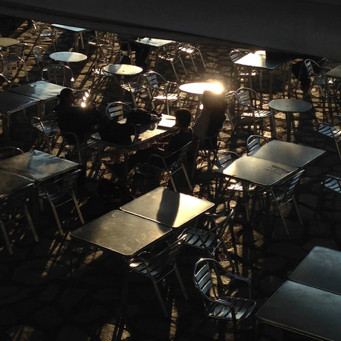
Conoce el trabajo de Máximo del Castillo en http://cargocollective.com/maximodelcastillo
Follow Máximo del Castillo’s work at http://cargocollective.com/maximodelcastillo